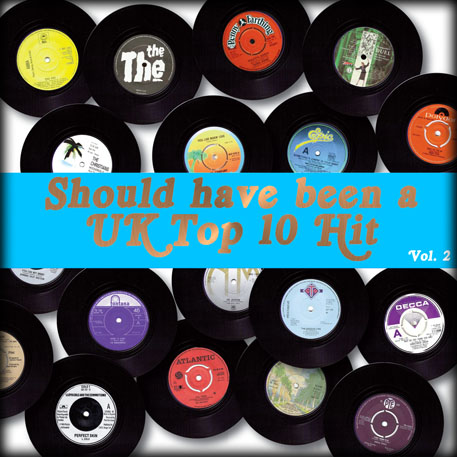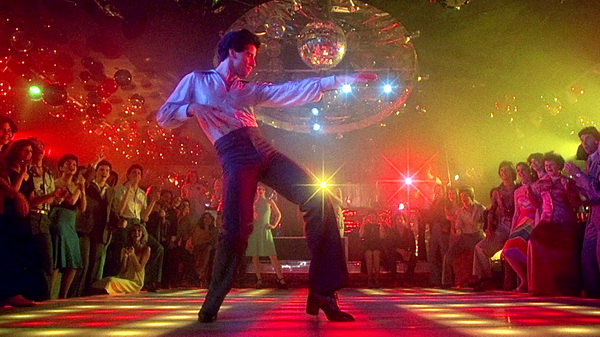Should Have Been A UK Top 10 Hit – Vol. 2
The second mix of singles that unaccountably failed to make the UK Top 10 starts off with a trio of songs that have become timeless classics since: Joe Jackson’s Is She Really Going Out With Him, Joy Division’s Love Will Tear Us Apart and Lloyd Cole & The Commotions’ Perfect Skin.
Joy Division even had two failed cracks at Top 10 glory, though one expects that reaching the upper reaches of the hit parades wasn’t really the group’s objective. Still, Love Will Tear Us Apart reached only #13 in 1980 and #19 when it was re-released in 1983 on the back of successor band New Order’s success (including a Top 10 hit a couple months earlier with Blue Monday). Happily, Paul Young’s version, also of 1983, wasn’t released as a single in the UK, so we were spared the indignity of his warbled interpretation inevitably going places the original twice failed to reach. Still, Young had Top 10 hits with it in Belgium and the Netherlands.
My selection criteria for this series have mostly excluded underperforming records by serial Top 10 residents. Every run of hits is liable to include an aberration or two. But I include ABBA’s Ring Ring because it was a spectacular flop, peaking at only #32 in 1974, rather than an aberration. Released as a follow-up to the #1 hit Waterloo, its failure (and that of the inferior I Do I Do I Do I Do; #38 in 1975) suggests that ABBA were initially seen as a fleeting one-hit wonder, not as the mammoth gold record accumulating machine they’d become following the release of the sublime S.O.S. in the summer of 1975.
 The year 1974 was particularly notorious for fine songs missing the Top 10 — and some rotten songs getting there instead. Though even in that year there were times when one could see why there was little room for a song as great as Pilot’s Magic, which really deserved to get to #1, as its lesser follow-up, January, did (in the first week of February ‘75).
The year 1974 was particularly notorious for fine songs missing the Top 10 — and some rotten songs getting there instead. Though even in that year there were times when one could see why there was little room for a song as great as Pilot’s Magic, which really deserved to get to #1, as its lesser follow-up, January, did (in the first week of February ‘75).
As Magic peaked at #11 in the first week of December 1974, the Top 10 included Barry White’s You’re The First, The Last, My Everything; David Essex’s Gonna Make You A Star; Rubettes’ Juke Box Jive; Bachman-Turner Overdrive’s You Ain’t Seen Nothing Yet; Eddie Holman’s (Hey There) Lonely Girl; and Queen’s Killer Queen, plus records by Gary Glitter and Elvis and a reggae thing by Rupie Edwards called Ire Feelings (Skanga). Still, why did Hello’s now rightly forgotten Tell Him zoom past Pilot from #12 to 6 in the charts? Where is the justice in that?
I imagine Lynsey de Paul’s Spector-Wall-of-Sound takeoff Ooh I Do was in its anachronistic ways a little ahead of its time. In the mid-1970s the revivalist taste was ‘50s rock & roll, with Sha-Na-Na and Showaddywaddy (though their big hit, Under The Moon Of Love, was a cover of an early ’60s song). The early ‘60s girl-band revival obviously had some traction in 1974, as Hello’s glam-rock cover of The Exciters’ Tell Him shows, but the pastiche of these songs had to wait another six years, when the Ramones hit the Top 10 with Baby I Love You.
I am ready to acknowledge that opinions on Malcolm McLaren’s Something’s Jumping In My Shirt might differ. I hold it to be one of the best pop songs of 1989, so its peak at #29 is inexplicable. The #1 was Black Box’s Ride On Time, and Tears for Fear’s Sowing The Seeds Of Love was featuring in the Top 10 as well. But the great British public also made Top 10 hits of such horrors or lightweight nonsense like Swing The Mood by Jive Bunny And The Mastermixers, Every Day (I Love You More) by Jason Donovan, Blame It On The Boogie by Big Fun (not to be confused with the fine dance song Big Fun by Innercity), I Just Don’t Have The Heart by Cliff Richard and Hey Dj I Can’t Dance To That Music You’re Playing by The Beatmasters featuring Betty Boo. McLaren might have had a legitimate grievance…
And when Joe Jackson’s Is She Really Going Out With Him peaked at #13 in late August 1979, ahead of it were, in order from #1 to 12: We Don’t Talk Anymore by Cliff Richard, I Don’t Like Mondays by The Boomtown Rats, Bang Bang by B.A. Robertson, Angel Eyes by Roxy Music, After The Love Has Gone by Earth Wind & Fire, Gangsters by The Special AKA, Duke Of Earl by Darts, Money by Flying Lizards, Reasons To Be Cheerful by Ian Dury And The Blockheads, Ooh! What A Life by the Gibson Brothers, Just When I Needed You Most by Randy Vanwarmer, and Hersham Boys by Sham 69. You decide whether or not Jackson suffered an injustice in that company. The inclusion of the song in this series clues you in on my view.
 As always, the mix is timed to fit on a standard CD-R and includes home-labelled covers.
As always, the mix is timed to fit on a standard CD-R and includes home-labelled covers.
1. Joe Jackson – Is She Really Going Out With Him (#13 1979)
2. Joy Division – Love Will Tear Us Apart (#13 1980 / #19 1983)
3. Lloyd Cole & The Commotions – Perfect Skin (#26 1983)
4. The Christians – Hooverville (#21 1987)
5. Squeeze – Hourglass (#16 1987)
6. Swing Out Sister – You On My Mind (#28 1989)
7. Malcolm McLaren feat. Lisa Marie – Something’s Jumping In My Shirt (#29 1989)
8. Heatwave – Groove Line (#12 1978)
9. Hi-Gloss – You’ll Never Know (#12 1981)
10. Propaganda – Duel (#21 1985)
11. The The – Heartland (#29 1986)
12. Bad Company – Feel Like Makin’ Love (#20 1975)
13. P.P. Arnold – The First Cut Is The Deepest (#18 1967)
14. The Mindbenders – Ashes To Ashes (#14 1966)
15. Emile Ford & the Checkmates – Them There Eyes (#18 1960)
16. The Bar-Kays – Soul Finger (#33 1967)
17. Abba – Ring Ring (#32 1974)
18. Lynsey De Paul – Ooh I Do (#25 1974)
19. Pilot – Magic (#11 1974)
20. Candlewick Green – Who Do You Think You Are (#21 1974)
21. Daniel Boone – Beautiful Sunday (#21 1972)
22. Barry Ryan – Can’t Let You Go (#32 1972)
More Should Have Been A UK Top 10 Hit













Recent Comments